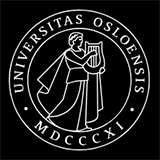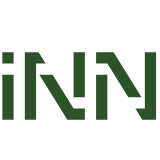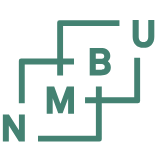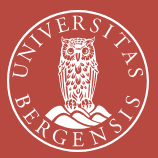The Norwegian University of Life Sciences (NMBU) is a well-known public university in Norway, focusing on education and research in the fields of life sciences, environmental sciences and natural resource management. Here are some key information about the Norwegian University of Life Sciences:
Overview
Founded: 1859
Institutional nature: public
Main campus location:
Oslo (Ås), main campus
Oslo city center
History
NMBU was founded in 1859 as the Norwegian University of Agricultural Sciences (UMB) and is one of the six higher education institutions with university title in Norway.
On January 1, 2005, the school was renamed the Norwegian University of Life Sciences (NMBU).
In January 2014, NMBU merged with the Royal Norwegian Veterinary College, further expanding its research and teaching capabilities in the field of animal medicine and health sciences.
School strength
NMBU has about 6,000 students and about 1,700 faculty and staff.
It offers undergraduate, master's and doctoral programs covering a variety of subject areas.
It enjoys an international reputation in the fields of life sciences, environmental sciences, agricultural engineering, biological sciences, food sciences, economics, etc.
The school has more than 550 doctoral students and emphasizes scientific research and innovation.
Educational philosophy
Emphasizes practical learning and encourages students to develop skills through internships and actual projects.
Focus on interdisciplinary cooperation, especially collaboration between different majors.
Attach importance to international education, recruit international students, and provide courses taught in English.
Committed to research and education on global issues such as sustainable development, environmental protection and food safety.
Subject settings
Bachelor's degrees:
Biological sciences
Environmental sciences
Agricultural sciences
Food sciences
Economics and resource management
Veterinary sciences
Chemistry
Mathematical sciences and technology
Master's degrees:
Agroecology
Applied aquaculture
Development and resource economics
Development studies
Feed manufacturing technology
Management of natural resources and sustainable agriculture
Tropical ecology and natural resource management
Biotechnology
Business administration
Plant sciences
Microbiology
Animal sciences
Environment and industry
Landscape construction and management
Renewable energy
Archaeology
Animal breeding and genetics
Water and environmental technology
PhD programs:
Life sciences
Environmental sciences
Agricultural sciences
Food sciences
Economics
Veterinary sciences
Chemistry
Mathematical sciences and technology
English-taught programs:
Most master's and doctoral programs are taught in English to attract international students.
Professional directions
Biological sciences: covers biology, ecology, genetics, etc.
Environmental sciences: includes environmental management, natural resource conservation, climate change, etc.
Agricultural sciences: involves crop production, soil science, plant pathology, etc.
Food Science: covers food processing, food safety, nutrition, etc.
Economics and Resource Management: involves agricultural economics, natural resource economics, sustainable development, etc.
Veterinary Science: includes animal medicine, animal health, animal welfare, etc.
Chemistry: covers organic chemistry, inorganic chemistry, analytical chemistry, etc.
Mathematical Sciences and Technology: involves applied mathematics, statistics, computer science, etc.
Campus
Osstown Campus:
Located in Osstown, on the outskirts of Oslo, about 30 kilometers from the center of Oslo.
The campus has modern teaching facilities, libraries, laboratories and social spaces.
The campus also has an international office to provide support and services for international students.
Oslo City Center Campus:
Located in the center of Oslo, it is mainly used for graduate education and research activities.
International Cooperation
NMBU actively participates in international exchange programs and has established cooperative relations with many higher education institutions around the world.
Provide exchange student programs to promote students' international vision and cultural exchanges.
As a member of the European University Association (EUA) and the University of the Arctic, NMBU has an important position in international education and research.
Fees
For EU/EEA students, NMBU is usually free, but a small registration fee is required.
For non-EU/EEA international students, tuition fees vary depending on the major, generally between 6,000 and 14,000 euros per year. The specific fees should be consulted directly with the school or visit its official website for the latest information.
In terms of living costs, the cost of living in Norway is relatively high, but you still need to consider the costs of accommodation, food and personal expenses.
Application requirements
Applicants usually need to have a high school diploma or equivalent.
You need to pass an entrance exam or interview to demonstrate your interest in the chosen major and your ability to work in a related profession.
The English proficiency requirement is usually B2 level (according to the Common European Framework of Reference for Languages CEFR).
-

University of Oslo
-

OsloMet - Oslo Metropolitan University
-

University of South-Eastern Norway
-

Nord University
-

University of Inland Norway
-

Norwegian University of Life Sciences
-

University of Bergen
-

University of Stavanger
-

University of Agder
-

Norwegian University of Science and Technology
-

Mesoamerican University
-

Istmo University
-

Mariano Galvez University of Guatemala
-

Regional University of Guatemala
-

Galileo University
-

Francisco Marroquín University
-

Rafael Landívar University
-

University of the Valley of Guatemala
-

University of San Carlos of Guatemala
-

Technological Institute of Tlaxcala Plateau
-

Golfo University
-

Technological University of South Sonora
-

Technological University of Huejotzingo
-

Tizimín Institute of Technology
-

Chilpancingo Institute of Technology
